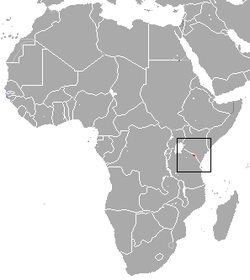| Kilimanjaro mouse shrew | |
|---|---|
| Scientific classification | |
| Kingdom: | Animalia |
| Phylum: | Chordata |
| Class: | Mammalia |
| Order: | Eulipotyphla |
| Family: | Soricidae |
| Genus: | Myosorex |
| Species: | M. zinki |
| Binomial name | |
| Myosorex zinki Heim de Balsac & Lamotte, 1956 | |
 | |
| Kilimanjaro mouse shrew range | |
The Kilimanjaro mouse shrew (Myosorex zinki) is a species of mammal in the family Soricidae endemic to Kilimanjaro Region of Tanzania. Its natural habitats are subtropical or tropical moist montane forests and swamps. [1]
